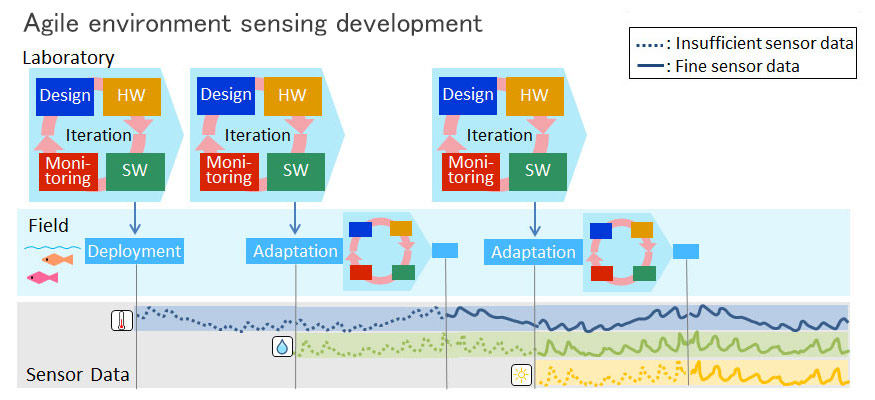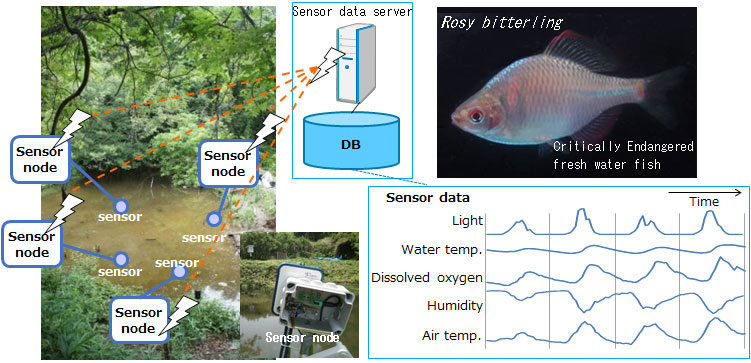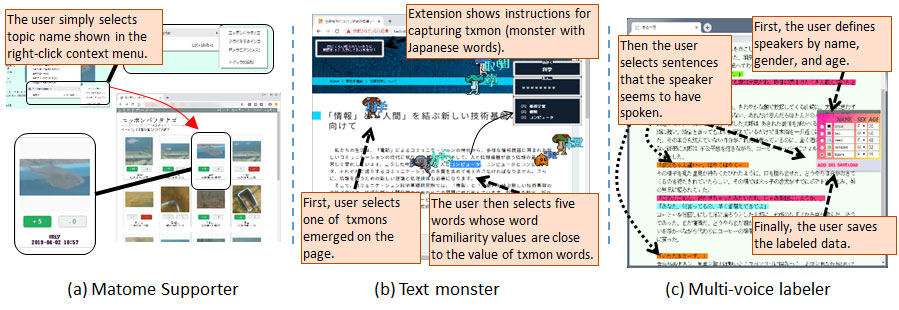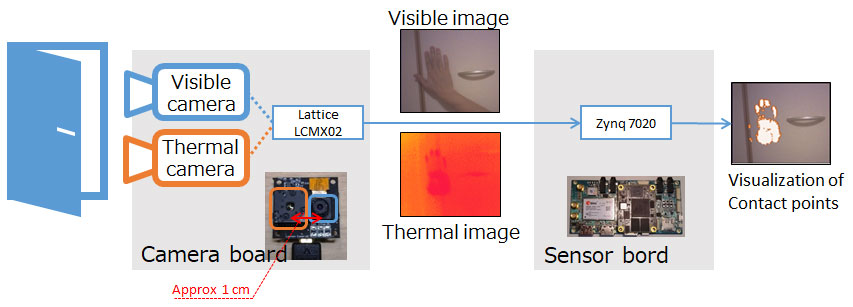Environmental Sensing
Tracking real world conditions with sensors
Today, the information-based society we live in is overflowing with vast amounts of information, including videos, Internet, and mobile content. However, in reality, many things occur in the real world that have not yet been converted to digital information. We believe that we can bring a variety of conveniences to human society by capturing these real world conditions with sensors and convert them into information. By placing numerous sensors in various environments to collect information, it will be possible to derive the information people need and provide it to them.
As a basic technology useful for that purpose, we created a sensing system through a process of trial and error, and proposed agile environmental sensing. We then conducted demontration experiements, such as installing sensors on garbage trucks to sense the urban environment in Fujisawa City, and worked on sensing the environment of ponds inhabited by an endangerd species of fish, as a joint experiment conducted with Kindai University. Furthermore, we have proposed Browser-based Human Computation, in which users participate by labeling data on their web browsers, as a technology for efficiently adding labels to various data obtained from sensing.
Agile Environment Sensing
When placing sensors in various locations as an attempt to actually build an environmental sensing system, sensing may not go as well as it does in a laboratory environment, and other problems may arise that we cannot find until we actually place sensors and collect data. There are also needs that can only be identified by analyzing sensor data, making the process of trial and error indispensable to system buiding. Therefore, we decided to start sensing as soon as possible, and proposed agile environmental sensing, in which we build sensing systems through trial and error.
Our key to realizing agile environmental sensing is CILIX, a general-purpose compact virtual machine for wireless sensor nodes. CILIX makes it possible to develop software in mutiple high-level languages, and start sensing with low installation costs. CILIX also supports remote wireless program updates, which enables remote tuning of sensing systems.

Smart city sensing using in-vehicle sensors
If events occurring in cities could be converted into data, then used for analysis and presenting information, it could help to provide a variety of services. But how can we do sensing efficiently in cities?
Our research group focused on garbage trucks, and installed sensors on vehicles used for garbage collection in Fujisawa City, in order to conduct an experiment on collecting various types of data.
Unlike package delivery vehicles, garbage trucks drive on a regular basis almost very day to every place that people live and put out their garbage. We realized that if we put sensors on these vehicles, we would be able to do regular, uninterrupted sensing of places where people live. We installed atmospheric sensors to monitor atmospheric coditions in the city, and focused on the garbage collection service itself to develop technology for estimating the amount of garbage produced by each district, so we could analyze the correlation between district statistics and garbage output.
By collecting an analyzing events occuring within cities, it will be possible to operate cities more efficiently and do urban planning based on detailed forecasts.
(This research was conducted in part as a NICT commissioned research, jointly with Keio University.)

Rare fish ecology sensing
Until recently, observing the ecology of fish usually involved researchers going into the field regularly and do observation in person. In ths study, we placed sensors in ponds inhabited by a critically endangered species of fish (the Japanese rosy bitterling), and used CILIX to build a system for sensing 24 hours a day. This made it possible to conduct detailed verification of dissolved oxygen content, as well as accumulated value and daily range of water temperature. Later, we also obtained images of fish in the water and collaborated with students from Kindai University to do analysis. The results of analysis suggested that there is a new ecology, because it is possible that the fish are spawning to avoid strong sunlight during the day, and there is a difference in when the fish engage in spawning depending on the season.
Through this study, we believe that we will be able to understand environmental factors relating to ecology that could not be measured until now, and also contribute to the conservation of biodiversity in various environments and the realization of effective breeding methods.
(This study was conducted as a joint experiment with the Faculty of Agriculture, Kindai University.)

Browser-based Human Computation
The technologies we have introduced so far are for realizing environmental sensing. When implementing this sensing and collecting large volumes of data, we face the issue of how to add label data to collected data, so that they can be used as data for machine learning. For this reason, we are also researching methods to create data for machine learning by utilizing resources on the Internet. Supervised machine learning is a technology that enables AI to guess what type of data it is handling by labeling a large amount of data in advance and having the AI do machine learning with the pre-labeled data. Supervised machine learning requires large volumes of high-quality, pre-labeled data in order for the AI to make accurate guesses, but creating datasets of this magnitude requires massive human and financial resources. We realized that by incorporating a labeling feature into existing web browsers, it would be possible to have Internet users voluntarily label material data on the Internet, and efficiently generate datasets for machine learning in the process. In this study, we have implemented multiple applications in order to validate this approach. We believe this will make it possible to create various services that utilize machine learning for a lower cost.

Human contact detection using heat traces
Individuals wearing masks to avoid coronavirus, and people regularly disinfecting handles and handrails are both effective countermeasure against the spread of coronavirus in public places. On the other hand, it takes tremendous effort to disinfect many places on a regular basis. In this study, we proposed a method to identify and visualize only parts that have been touched by people, using heat traces imaged by a thermographic camera. By showing locations where the virus may be residing, we believe it will be possible to alert individuals and improve the efficiency of disinfection work.
